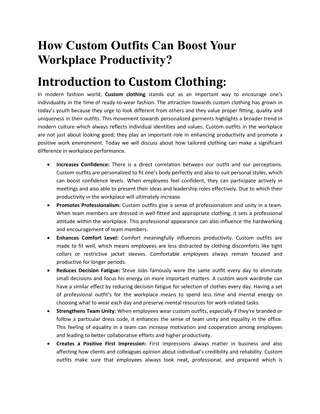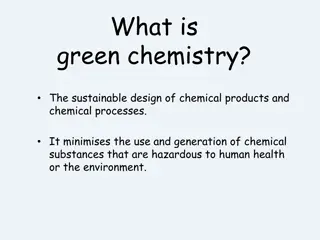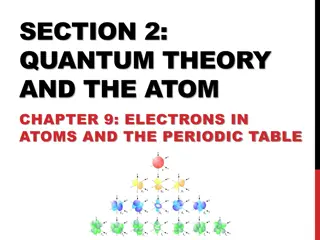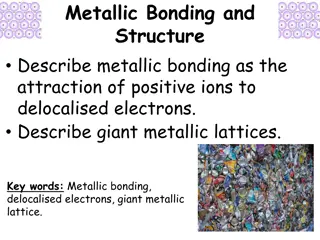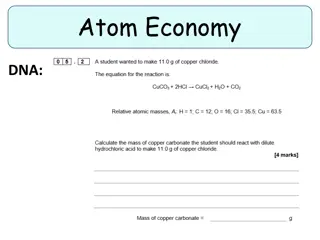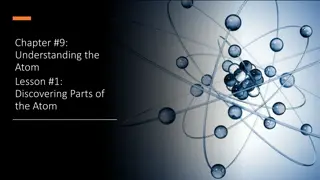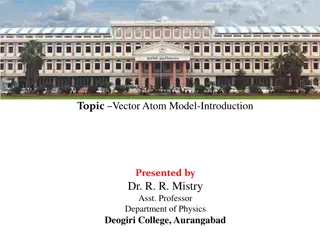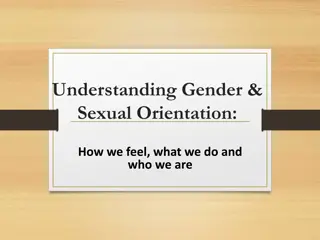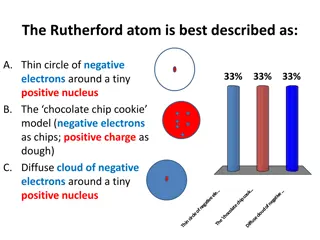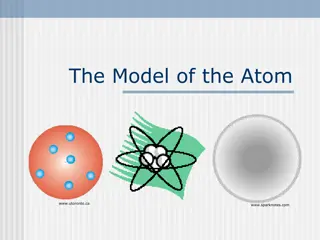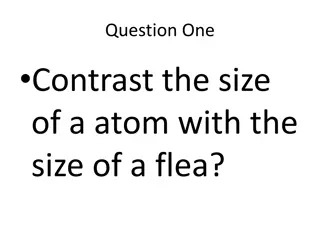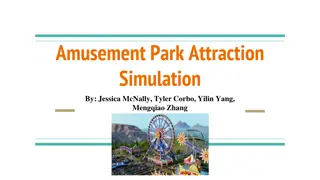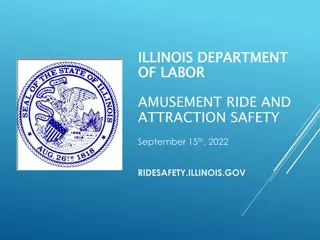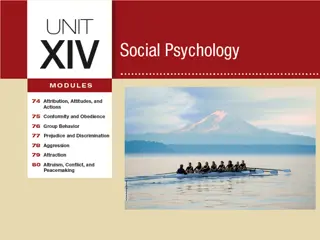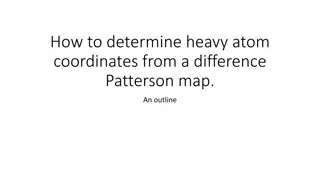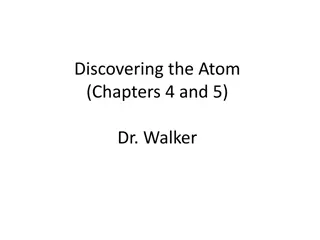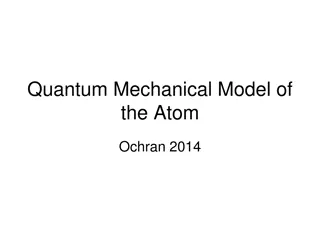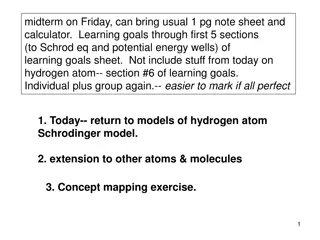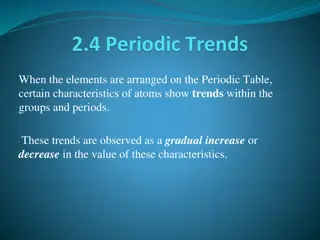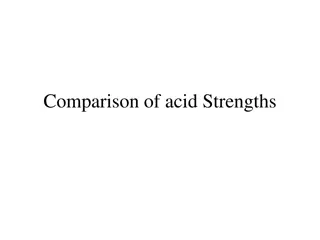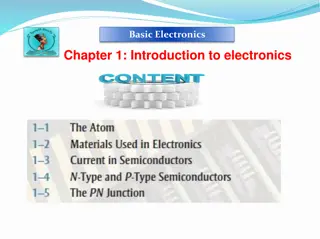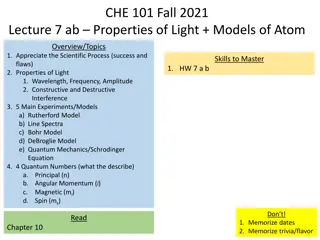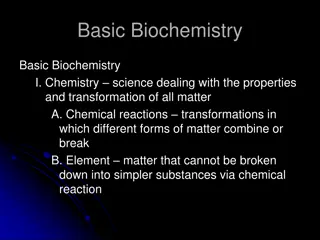lounge business plan
The lounge business plan meticulously orchestrates the setup of a sophisticated venue, intertwining thorough market analysis, financial projections, and operational intricacies. Its pivotal focus lies in cultivating a distinctive ambiance, strategically ensuring the attraction and retention of a div
2 views • 47 slides
TAMS User Research
The TAMS User Research project focuses on improving understanding of how a Talent Attraction and Migration Service for Scotland can meet migrant users' needs. The research includes objectives, methodology, engaging migrant lived experience, and insights from interviews with recently arrived migrants
1 views • 31 slides
Ancient Spells and Charms for Love and Control
Uncover the mystical world of ancient charms and spells, from healing and knowledge to love and success. Explore the esoteric practices of philtrokatadesmos and eros spells, delving into binding and attraction rituals that have been used throughout history. Dive into the intriguing methods of invoki
2 views • 21 slides
Exploring Magnetism: Properties, Differences, and Similarities
Discover the properties of magnets and magnetic materials, understand the differences and similarities between permanent magnets and electromagnets. Delve into the basics of magnetism, explore magnetism stations, hypothesize about magnetic attraction, and learn interesting facts about magnets. Engag
4 views • 18 slides
Understanding Models of the Atom: Nucleus, Protons, Electrons
Dive into the fundamental concepts of atoms, exploring their structure with a focus on the nucleus, protons, electrons, and neutrons. Discover how the periodic table reveals crucial information about elements, such as atomic number and mass number. Explore the evolution of atom models and the necess
3 views • 20 slides
Understanding Atomic Configurations and Term Symbols
The energy of atomic configurations is determined by electrostatic attraction between electrons and the nucleus, electron-electron repulsion, spin-orbit coupling, and spin-spin interactions. Term symbols in electronic spectroscopy specify atomic states using quantum numbers. Hund's rule and the Paul
8 views • 12 slides
Buy Unique Fairy Floss Machines to Upgrade Your Event
In the heart of every memorable carnival or promotional day lies a unique attraction that draws crowds and smiles alike. The Slushie Co. introduces the ultimate game-changer for your event - the Snow Flow Fairy Floss Machine. \n\nCrafted with industrial-grade manufacturing quality and components, th
3 views • 6 slides
How Custom Outfits Can Boost Your Workplace Productivity
Custom clothing stands out as an important way to encourage one\u2019s\nindividuality in the time of ready-to-wear fashion. The attraction towards custom clothing has grown in \ntoday\u2019s youth because they urge to look different from others and they value proper fitting, quality and \nuniqueness
1 views • 2 slides
Exploring Love and Relationships: Understanding Attraction and Pressure
Delve into the complexities of friendships, attraction, and societal pressure in the realm of love and relationships. Reflect on the significance of caring for oneself and others, while navigating feelings of attraction during stages like puberty. Explore scenarios to discuss feelings of pressure an
0 views • 12 slides
Exploring Groove Mechanics and Beat Development in Music Lessons
Delve into the world of beat and groove development with this music lesson resource package for Year 7 and 8 students. Explore terminology, experiment with drum set components, create beat patterns, and understand the importance of pulse, rhythm, and accent in music. Uncover the science of our attra
0 views • 23 slides
Understanding Green Chemistry Principles and Efficiency in Chemical Processes
Green chemistry focuses on designing sustainable chemical products and processes to minimize hazardous substances. It advocates for waste prevention, efficient reactions, and use of raw materials. Chemical engineers play a key role in optimizing percentage yield and atom economy for efficient produc
0 views • 49 slides
Exploring Quantum Theory and the Atom: Electrons in Atoms and the Periodic Table
Delve into the fascinating world of quantum theory and the atom in Chapter 9, where we compare Bohr's model with the quantum mechanical model. Understand de Broglie's wave-particle duality and Heisenberg's uncertainty principle's impact on our current electron view. Discover the relationships among
0 views • 31 slides
Understanding Attraction and Intimacy in Relationships
Exploring the dynamics of attraction and intimacy, this content delves into the factors that lead to friendship and romantic connections. It discusses the role of proximity, physical attractiveness, similarity, complementarity, and relationship rewards in forming bonds. Additionally, it examines the
2 views • 52 slides
Understanding Metallic Bonding and Giant Metallic Lattices
Metallic bonding involves the attraction of positive metal ions to delocalized electrons, forming giant metallic lattices. In this structure, positive metal ions occupy fixed positions while electrons move freely throughout. This bonding is different from covalent bonding as it is delocalized, leadi
1 views • 19 slides
Understanding Atom Economy in Chemical Reactions
Explore the concept of atom economy in chemistry, learn how to calculate atom economy of a reaction, and understand why it is important for industrial processes. Watch a video, answer questions, and practice with worked examples and self-assessment tasks to grasp the significance of efficient indust
0 views • 21 slides
Exploring Parts of the Atom: A Visual Journey
Delve into the discovery of the constituents of an atom, from the negatively charged particles in the electron cloud to the positively charged particles in the nucleus. Learn about protons, neutrons, and the particle with no charge as they form the building blocks of matter. Engage with visually sti
4 views • 17 slides
Understanding Basic Electrical Concepts
Delve into the fundamentals of electricity, covering atom structure, electrical materials, direct and alternating currents, and more. Gain insights into key terms and definitions essential for basic circuit analysis. Explore the significance of atom charges, materials conductivity, and the role of p
0 views • 21 slides
Understanding Atomic Structure: Electrons, Energy Levels, and Historical Models
The atomic model describes how electrons occupy energy levels or shells in an atom. These energy levels have specific capacities for electrons. The electronic structure of an atom is represented by numbers indicating electron distribution. Over time, scientists have developed atomic models based on
0 views • 5 slides
Exploring the Vector Atom Model in Quantum Physics
Delve into the Vector Atom Model as presented by Dr. R. R. Mistry, discussing the quantum numbers, coupling, exclusion principles, and effects like Zeeman and Stark. Learn how this model explains complex atomic spectra and spatial quantization, offering a deeper understanding of atomic structures.
0 views • 11 slides
Understanding Gender and Sexual Orientation: Exploring Identity and Attraction
Delve into the complexities of sexual orientation, gender identity, and attraction. Discover the nuances of orientation, behavior, and identity. Learn about various terms such as heterosexual, lesbian, gay, bisexual, queer, and more. Understand the significance of gender identity, including cisgende
1 views • 16 slides
The Rutherford Atom and Its Structure
The Rutherford atom is characterized by a thin circle of negative electrons surrounding a tiny positive nucleus. In this model, the electrons are in a diffuse cloud around the nucleus, forming the majority of the atomic volume but only a small fraction of the mass. Protons define an element's atomic
0 views • 17 slides
Evolution of Atomic Models: From Thomson to Bohr
Scientists from J.J. Thomson to Niels Bohr made groundbreaking discoveries in understanding the structure of the atom. Thomson's plum-pudding model was followed by Rutherford's nuclear model, revealing the nucleus. Bohr introduced the concept of discrete energy levels and orbits for electrons. These
4 views • 22 slides
Exploring Atom Structure and Properties Questions
This series of questions delves into the intriguing world of atoms, covering topics such as atom size comparison, proton count identification, location of metals on the Periodic Table, nucleus charge explanation, atomic number significance, various arrangements of the Periodic Table, subatomic parti
0 views • 12 slides
Limits on Dark Energy Using Atom Interferometry - UC Berkeley Study
Research conducted by Paul Hamilton Müller's group at the University of California, Berkeley, focuses on using atom interferometry to explore dark energy. The study delves into screened scalar fields as dark energy, future reach with atom interferometry, known unknowns related to dark energy densit
0 views • 39 slides
Amusement Park Attraction Simulation Project Overview
This project focuses on optimizing an amusement park attraction through simulation modeling using Simio. Objectives include adjusting system parameters to enhance ride efficiency, improve customer throughput, and maximize utilization of the presentation room. Key performance measures center around m
0 views • 20 slides
Illinois Department of Labor - Amusement Ride and Attraction Safety Updates
The Illinois Department of Labor has issued updates related to amusement ride and attraction safety, including fee structures, ride operator training requirements, trampoline court rules, ASTM standards, rule changes effective January 1, 2022, accident statistics, and inspection data up to 2022. The
0 views • 24 slides
Understanding Attraction and the Mere Exposure Effect
Explore the dynamics of attraction and romantic love, delving into why we are drawn to certain individuals and how familiarity influences our feelings. Uncover key factors such as proximity, attractiveness, and similarity, along with the intriguing concept of the mere exposure effect, which elucidat
0 views • 37 slides
Atom Probe Sample Request Details and Instructions
This detailed guide provides instructions and recommendations for submitting a sample request for atom probe analysis. It includes information on how to describe the sample, provide images, and outline the goals of the analysis. By following these guidelines, customers can facilitate discussions wit
0 views • 5 slides
Deciphering Heavy Atom Coordinates from Difference Patterson Map: An Overview
Understanding how to determine heavy atom coordinates from a difference Patterson map involves recognizing the relationship between Patterson peak coordinates (u,v,w) and space group symmetry operators in crystallography. By solving equations that relate these coordinates, the absolute positions of
0 views • 5 slides
Evolution of Atomic Theory: From Democritus to Thomson
Examine the evolution of atomic theory through the contributions of key scientists such as Democritus, Dalton, and Thomson. Explore the concept of subatomic particles, different models of the atom, and the impact of experiments on our understanding of the atom over time. From the solid sphere model
0 views • 33 slides
Evolution of Atomic Models: From Rutherford to Quantum Mechanics
Various atomic models have been proposed throughout history, starting with John Dalton's idea of atoms as tiny particles to J.J. Thomson's Plum Pudding model. Ernest Rutherford's discovery of the nucleus and Niels Bohr's quantum model of the atom revolutionized our understanding. Bohr's proposal of
0 views • 38 slides
Quantum Chemistry Learning Goals and Concepts
This content covers the learning goals and concepts of quantum chemistry leading up to the Schrodinger equation and potential energy wells, excluding the material on the hydrogen atom introduced later. It explores models of the atom, including observations of atomic spectra, the Bohr model, de Brogl
0 views • 22 slides
Effective Strategies for Partnership Identification and Attraction
Partnership identification and attraction are crucial for the success of any project. Raphael Wahome and Xavier Michel emphasize the importance of bringing team members together, forming joint visions and objectives, and engaging various stakeholders. The process involves identifying potential partn
0 views • 6 slides
Understanding Periodic Trends in Atomic Characteristics
Periodic trends in atomic characteristics such as atomic radius, ionization energy, ion size, and electronegativity are essential in understanding the behavior of elements. These trends are influenced by factors like the energy levels and the number of protons and electrons in an atom. The atomic ra
0 views • 23 slides
Factors Affecting Acid Strength: Atoms, Size, Hybridization, and Electronegativity
The strength of acids is influenced by various factors such as the atom on which the negative charge of the acid's conjugate base rests, atom size, hybridization, and electronegativity. The stability of negative charges on atoms, atom size allowing charge delocalization, preferred orbital types for
0 views • 23 slides
Understanding the Basics of Atom Structure in Electronics
Learn about the fundamental concepts of atom structure in electronics, including the components of atoms, the Bohr model, electron orbits, energy levels, valence electrons, and more. Understanding these principles is essential for grasping the underlying mechanisms of electronic devices.
0 views • 18 slides
Technical Committee Update on Attraction of New Listings Initiatives
The Technical Committee on Attraction of New Listings provides an update on initiatives aiming to increase the number of listed companies on exchanges. The mandate includes proposing strategies, undertaking advocacy, and implementing various activities. Specific initiatives involve engaging with ind
0 views • 7 slides
Exploring Properties of Light and Models of the Atom in Chemistry
Delve into the fascinating world of light properties and atom models in chemistry. Unravel the scientific process, from successes to flaws, and master concepts like wavelength, frequency, and amplitude. Explore key experiments and models such as the Rutherford, Bohr, and DeBroglie models, as well as
0 views • 24 slides
Understanding Basic Biochemistry: Matter, Elements, and Atom Structure
Basic Biochemistry explores the science of matter, chemical reactions, elements, and atom structure. It covers the properties and transformations of matter, the significance of essential elements for life, and the structure of atoms including protons, neutrons, and electrons. This foundational knowl
0 views • 50 slides
Insights on Interpersonal Attraction, Relationships, and Love
Discover the significance of relationships in life, explore factors influencing interpersonal attraction like proximity, similarity, and physical appearance. Delve into stereotypes related to attractiveness, learn about Sternberg's Triangular Theory of Love, different types of love such as Companion
0 views • 29 slides







